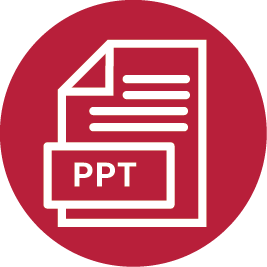
Assessing the Distributional Implications of the EU’s CBAM on India: A CGE Analysis
DOWNLOADS
Executive Summary
The European Union’s Carbon Border Adjustment Mechanism (EU-CBAM) is a climate policy tool aimed at reducing carbon leakage by imposing carbon tariffs on imports from non-EU countries with lower environmental regulations. The policy is particularly imposed on the emissions-intensive-trade-exposed (EITE) sectors such as iron and steel, cement, aluminium, and fertilisers. This study uses a Computable General Equilibrium (CGE) model to evaluate the macroeconomic and fiscal effects of the CBAM on India, with a focus on Gross Domestic Product (GDP) impact, sectoral competitiveness, exports, fiscal revenue, and household welfare. Three policy scenarios are simulated to understand the possible outcomes of CBAM implementation: (i) PCARBON: a domestic carbon tax with revenue retained by India; (ii) CBAM: a carbon tax on EU exports where revenue accrues to the EU; and (iii) PCARBON + CBAM: a hybrid taxation model where carbon tax rates are halved and revenue is split between India and the EU.
India’s Exposure to the CBAM
Although India’s CBAM-exposed exports to the EU account for only 0.2% of its GDP, the iron and steel sector constitutes 90% of these exports, making it particularly vulnerable. Thus, there is concern that imposing carbon tariffs could erode India’s export competitiveness and increase production costs in key industries. Retaining carbon tax revenue within India is crucial to mitigating these negative effects.
Literature on the Effects of the CBAM
The Indian economy is expected to experience mixed effects. Some projections indicate a significant decline in iron and steel exports, whereas others suggest a minimal impact across key industries such as fertiliser, cement, aluminium, and steel. Policy recommendations highlight the need for domestic carbon pricing mechanisms, energy efficiency improvements, and fuel switching technologies to mitigate negative effects. Additionally, revenue recycling strategies could help offset distortions from carbon taxation and support a more sustainable transition for affected industries.
Dataset: CSEP-ESAM-2019–2020: The primary data source for CGE models is the Social Accounting Matrix (SAM), which details the economic interlinkages between producers, households, governments, and other institutions. This study uses the CSEP SAM 2019–2020 for India, which depicts interrelationships between production sectors, factors of production, households, institutions, and environmental factors such as emissions. The SAM comprises 45 production sectors, 318 labour and capital categories, and 80 household groups.
For this analysis, the SAM has been condensed into 21 production sectors (including three fossil fuel sectors—coal, oil, and natural gas—and 18 non-fossil fuel sectors), two factors of production (labour and capital), and 10 household categories divided equally between rural and urban regions. This level of aggregation allows for distinguishing carbon-intensive sectors, such as coal, oil, and gas, from less carbon-intensive sectors, facilitating a detailed analysis of carbon pricing policies on emissionsintensive sectors like iron and steel, aluminium, cement, and fertiliser.
The Net Indirect Taxes (NIT) and Rest of the World (ROW) accounts are disaggregated into EU and non-EU regions, bridging critical gaps in the existing literature on single-country CGE models that have examined policies like the CBAM. This enables a comprehensive assessment of the CBAM’s impact on EU and non-EU trade and government revenue. The impacts have been simulated from 2026 to 2030 because the CBAM will come into effect in 2026.
Macroeconomic Impact of the CBAM
1. Impact on GDP
- In the CBAM scenario, GDP declines by between 0.02% and 0.03% due to carbon tax revenue outflows to the EU.
- The PCARBON + CBAM scenario leads to a 0.01% GDP gain in the later years, as part of the tax revenue is retained domestically, cushioning the adverse effects.
- A higher domestic carbon tax rate (PCARBON) results in greater economic distortions unless revenue is effectively recycled.
2. Sectoral Output Effects
- CBAM-exposed industries such as iron and steel, cement, aluminium, and fertilisers experience a decline in output due to higher costs.
- The fertiliser sector benefits in the PCARBON scenario due to lower relative carbon intensity and substitution effects.
- Renewable energy sectors see increased demand and expansion, offsetting some losses in fossil-fuel-intensive industries.
3. Impact on Trade and Exports
- In all scenarios, exports to the EU decline, with the most significant impact on the cement and steel sectors.
- Fertiliser exports increase in the PCARBON scenario, benefiting from improved domestic competitiveness.
4. Impact on Fiscal Revenue
- In the PCARBON scenario, India gains significant carbon tax revenue, estimated at 1% of GDP by 2030.
- In the PCARBON + CBAM scenario, the retained revenue is 0.5% of GDP, balancing economic concerns with EU trade compliance.
- The CBAM scenario results in revenue loss as the tax accrues entirely to the EU, causing negative economic spillovers.
Distributional Impact on Households
CBAM-induced price increases lead to a decline in household consumption, with urban households experiencing a higher burden due to their greater reliance on carbon-intensive industries. The PCARBON scenario provides some relief through domestic tax revenue recycling, mitigating the negative effects on purchasing power.
Policy Recommendations
1. Adopting a Domestic Carbon Pricing Mechanism
- Implement a moderate carbon tax to retain revenue domestically and alleviate CBAM compliance costs, along with the CBAM to be imposed by the EU from 2026.
- Use carbon revenue for green subsidies, industry support, and household compensation programmes.
2. Strengthening Trade and Export Strategies
- Diversify exports to non-EU markets to reduce dependence on EU trade.
- Negotiate better trade terms with the EU to ensure fair CBAM pricing mechanisms.
- Enhance energy efficiency and carbon reduction measures to maintain export competitiveness.
3. Accelerating the Renewable Energy Transition
- Promote renewable energy investments, as the CBAM incentivises cleaner production.
- Provide policy incentives for industrial decarbonisation and technological upgrades.
The CBAM and India’s Net Zero Goals
The study underscores how the CBAM can catalyse India’s net-zero transition by encouraging lower-carbon production and renewable energy adoption. Implementing domestic carbon pricing ensures that India captures tax revenue while promoting sustainable industrial growth. The findings support the view that well-designed policies can turn CBAM compliance into an opportunity for green transformation rather than an economic burden.
Conclusion
The optimal response to the CBAM would be to impose a domestic carbon tax, starting with a lower tax rate, consistent with India’s developing country status. The proposed Carbon Credit Trading Scheme (CCTS) is a step in this direction. The government could auction allowances, which could be used to reduce the adverse effects on society or to further the energy transition. In conclusion, the impact of the EU-CBAM on the Indian economy could depend on several factors, such as the carbon price level and the distribution of carbon tax revenue between India and the EU. It is important to consider these aspects while designing appropriate policy responses.
Q&A with authors
What is the core message conveyed in your paper?
The study finds the EU’s Carbon Border Adjustment Mechanism (CBAM) will have a modest overall impact on India, but significant effects on certain carbon-intensive sectors. CBAM-targeted exports make up only ~0.2% of India’s GDP. Without domestic action, the EU’s carbon tariff would slightly reduce India’s GDP (~0.02–0.03% decline) and negatively impact key exports like steel and cement. This would also curb household consumption, with urban families experiencing the most impact due to higher prices in carbon-heavy goods. However, if India implements its own carbon tax and keeps the revenue domestically, it can largely neutralise these downsides. Such a step would capture funds (around 1% of GDP by 2030) inside India to reinvest in green measures and compensation, leaving GDP mostly unaffected and also allowing a slight increase over time. In short, proactive domestic measures can turn CBAM from a small economic impact into a manageable transition.
What presents the biggest opportunity?
Despite the risks, CBAM offers India a chance to accelerate clean growth and fiscal gains for the government. By adopting a domestic carbon pricing strategy, India can turn this situation to its advantage. The analysis indicates that if India levies its own carbon tax in parallel with CBAM, it will retain valuable revenue instead of losing it to the EU. This could amount to roughly 1% of GDP by 2030 – funds that can be used for enhancing green infrastructure, technological improvements in hard-to-abate sectors, and cushioning consumers. Such an approach also absorbs the negative economic impact: with revenue kept at home, the GDP effect is negligible (even a slight positive in later years). Additionally, cleaner sectors would get a boost – for example, renewable energy demand grows, and even the fertiliser industry becomes more competitive under a domestic carbon tax regime. Overall, the biggest opportunity is to leverage CBAM as a catalyst for India’s low-carbon transition, using domestic policy to sustain exports and drive innovation.
What is the biggest challenge?
The biggest challenge from the EU’s CBAM is managing its potential economic strain on India’s industries and households. CBAM adds a carbon cost to certain exports, so sectors like steel, cement, aluminium, and fertiliser could see output declines due to higher costs, losing some competitiveness in the EU market. While CBAM-covered exports are only ~0.2% of India’s GDP, 90% of that is steel, so a hit to steel can ripple through employment and incomes. Without mitigating action, India’s GDP is projected to dip slightly (~0.02–0.03%), and consumers would feel the pinch of higher prices, with urban households most affected. Moreover, if India doesn’t enact its own carbon tax, all the carbon tariff revenue (about 1% of GDP by 2030) would accrue to the EU, leaving the union government less able to support affected sectors and households. The challenge is to prevent CBAM from undermining growth and equity by designing timely domestic policy responses, such as a carbon tax.
Joydeep Ghosh
Find on this page

The Centre for Social and Economic Progress (CSEP) is an independent, public policy think tank with a mandate to conduct research and analysis on critical issues facing India and the world and help shape policies that advance sustainable growth and development.







